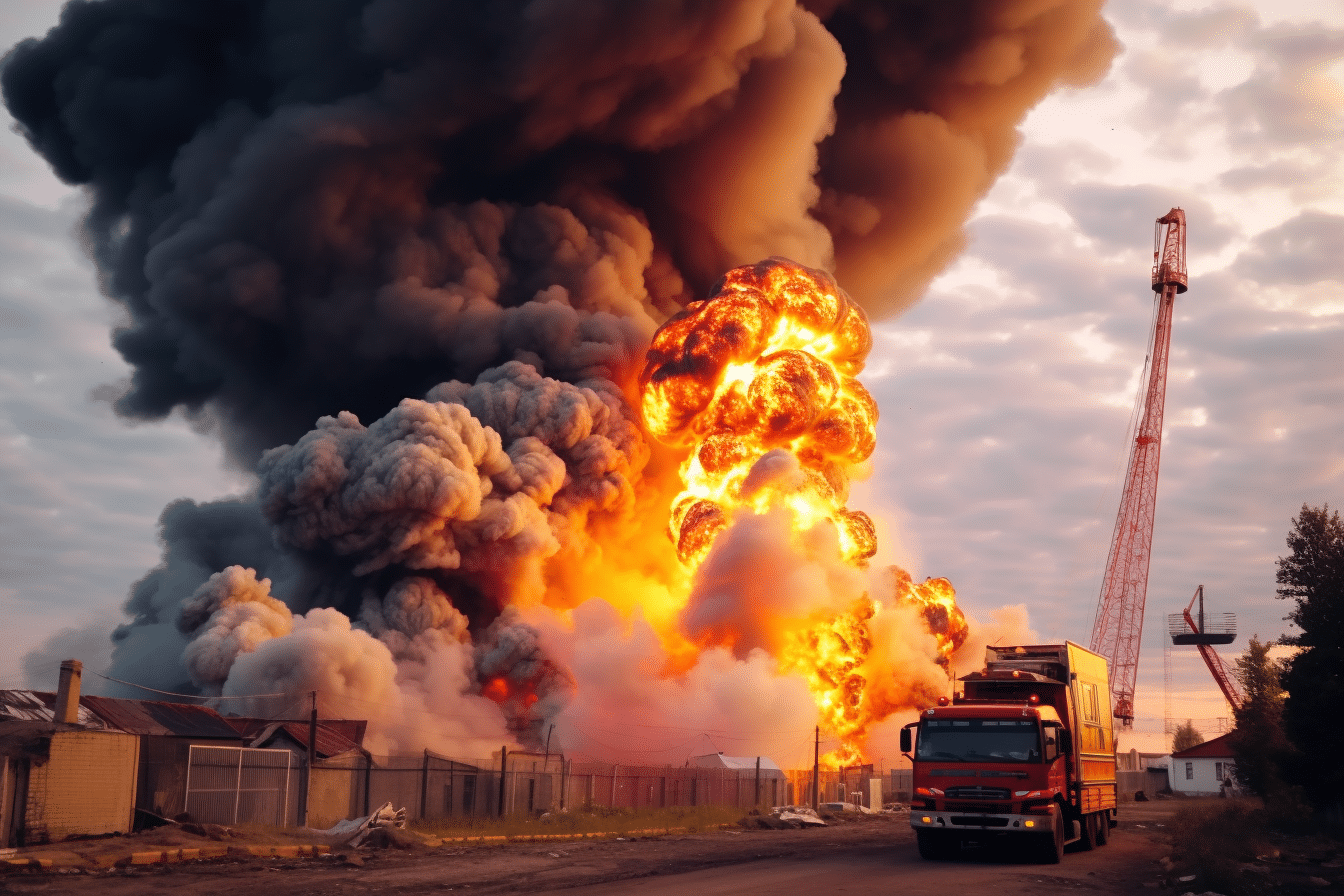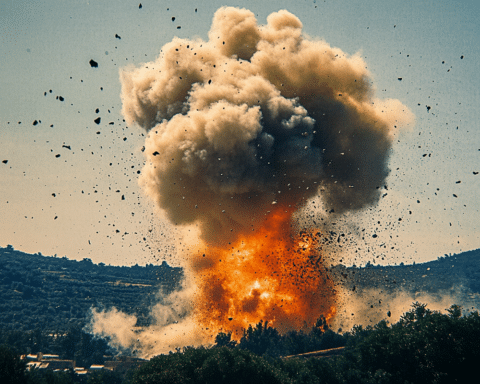Russian officials have claimed that Ukraine launched drone strikes on Moscow and Crimea. One of the drones reportedly crashed near the main headquarters of Russia’s Defense Ministry while Russian forces continued to assault port infrastructure in southern Ukraine.
Sergei Sobyanin, the Mayor of Moscow, announced that the drone strikes hit two non-residential buildings in the city, causing no fatalities. Russian authorities also reported that a Ukrainian drone hit an ammunition warehouse in Russian-occupied Crimea, significantly disrupting highway traffic.
One of the drones reportedly fell near the Komsomolsky highway in the heart of Moscow, causing damage to nearby shops and a residential building about 200 meters away from the impressive Defense Ministry structure. This ministry’s main headquarters, just 2.7 kilometres from the Kremlin, houses Pantsyr air defence systems on its roof. It remains unclear whether the drone specifically targeted this headquarters or was intended for another location within central Moscow.
A second drone reportedly struck an office building in southern Moscow, causing extensive damage to several top floors, a far more visible impact than earlier drone attacks on Russia’s capital.
Emergency crews are assessing the damage, and traffic has been temporarily halted in areas where the drones crashed.
The Ukrainian authorities have yet to take responsibility for the strikes, which mark the second drone attack on the Russian capital this month.
Earlier in the month, on July 4th, Russian military officials reported that they successfully downed four out of five drones approaching Moscow, while the fifth was electronically jammed and forced to land. This incident led to temporary flight restrictions at Moscow’s Vnukovo airport, diverting flights to other Moscow airports.
Dmitry Peskov, Kremlin’s spokesperson, acknowledged that the frequency of drone attack attempts on Russian regions has escalated.
Peskov refrained from providing details regarding whether the increased attacks have led to advancements in Russia’s air defence systems.
Russian officials reported another Ukrainian drone strike on an ammunition warehouse in northern Crimea. This attack interrupted traffic on a major highway and a railway line across the Black Sea peninsula, which Russia controversially annexed in 2014. Railway services were restored a few hours later.
Sergei Aksyonov, the Moscow-appointed leader of Crimea, mentioned that authorities had ordered the evacuation of several villages within a five-kilometre radius of the targeted depot.
According to the Russian Defense Ministry, 11 of the 17 attacking drones were electronically jammed and crashed into the Black Sea, while another three were shot down.
Ukraine’s digital transformation minister, Mykhailo Fedorov, suggested on his messaging app channel that the drone attacks on Moscow and Crimea indicate the decreasing efficiency of Russia’s electronic warfare and air defences, predicting more such incidents.
The Ukrainian news outlet Ukrainska Pravda reported that Ukrainian military intelligence had orchestrated the drone attack on Moscow.
On the other hand, Russia continued its assault on Ukraine’s southern ports on the Danube River with exploding drones, injuring seven people, and destroying a grain hangar and other storage facilities, according to Ukrainian officials. They claimed to have downed three of the attacking drones.
This assault continues a series of attacks damaging critical port infrastructure in southern Ukraine over the past week, allegedly in retaliation for a Ukrainian strike on the crucial Kerch Bridge linking Russia and Crimea last week.
Ukrainian President Volodymyr Zelenskyy justified the attack on the bridge during a video conference at the Aspen Security Forum over the weekend, stating that it was a legitimate target for Ukraine as Russia uses it to transport military supplies.
With Moscow’s recent cancellation of a significant grain deal amid Kyiv’s persistent attempts to reclaim its occupied territories, Russia has repeatedly attacked Odesa, a vital grain export hub.
An attack on Odesa reportedly killed one person and injured 22 others, damaging 25 landmarks, including the Transfiguration Cathedral.
UNESCO strongly condemned the attack on heritage sites and announced plans to send a mission to evaluate the damage. The Russian military denied targeting the Transfiguration Cathedral, attributing the damage to a Ukrainian air defence missile without providing evidence.
Over the last 24 hours, ten people have been wounded in Russian attacks on Ukraine, according to Ukrainian officials. Alongside the injuries in the Odesa region, civilian casualties have been reported in 24 towns and villages in the partially occupied Kherson region, near the Zaporizhzhia nuclear power plant, and in the town of Kucherivka in Ukraine’s Kharkiv region.
The ongoing conflict between Russia and Ukraine continues to escalate, with both nations reporting the use of drone technology for aggressive maneuvers. The drone attacks on Russian territories significantly shift Ukraine’s defensive strategy, while Russian strikes continue to impact critical infrastructure and civilian sites within Ukraine. These recent incidents reveal an increasingly volatile landscape, indicating that peace talks and diplomatic resolutions remain far on the horizon.




